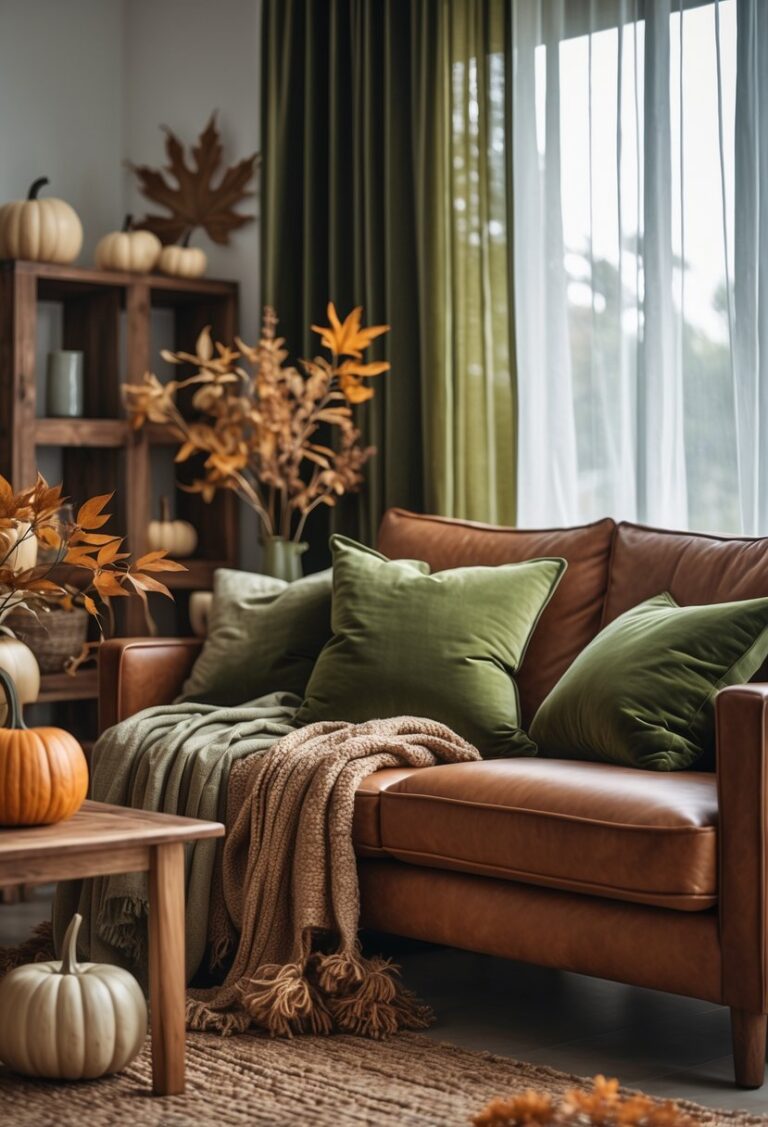Living Room Decor Ideas: 12 Expert Tips to Elevate Your Space
Your living room is one of the most important spaces in your home, where you relax, entertain, and spend time with family. Decorating it well can make the area more comfortable and inviting for both daily use and special occasions.
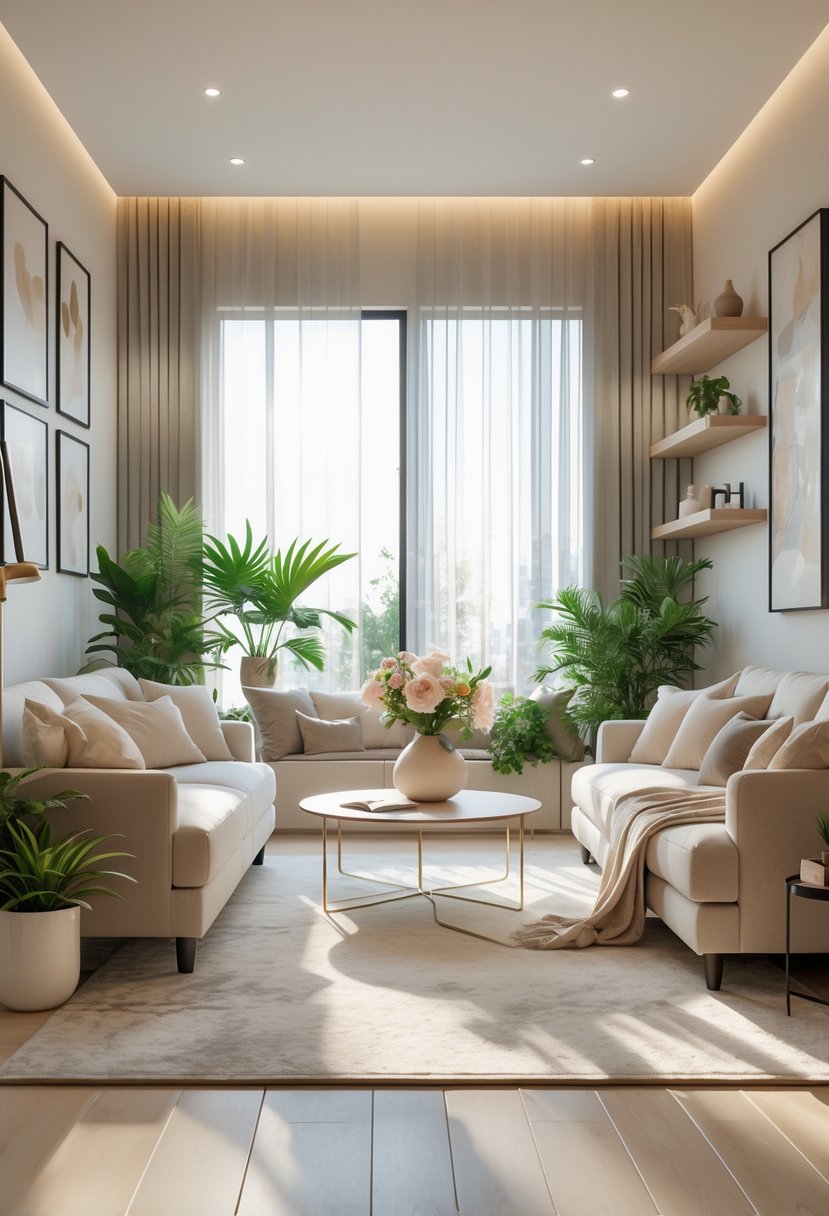
Living room decor ideas help you create a space that matches your style and meets your needs. Whether you want a cozy spot, a formal setting, or something in between, these ideas offer ways to improve comfort and look.
1) Layer textured rugs for depth and warmth
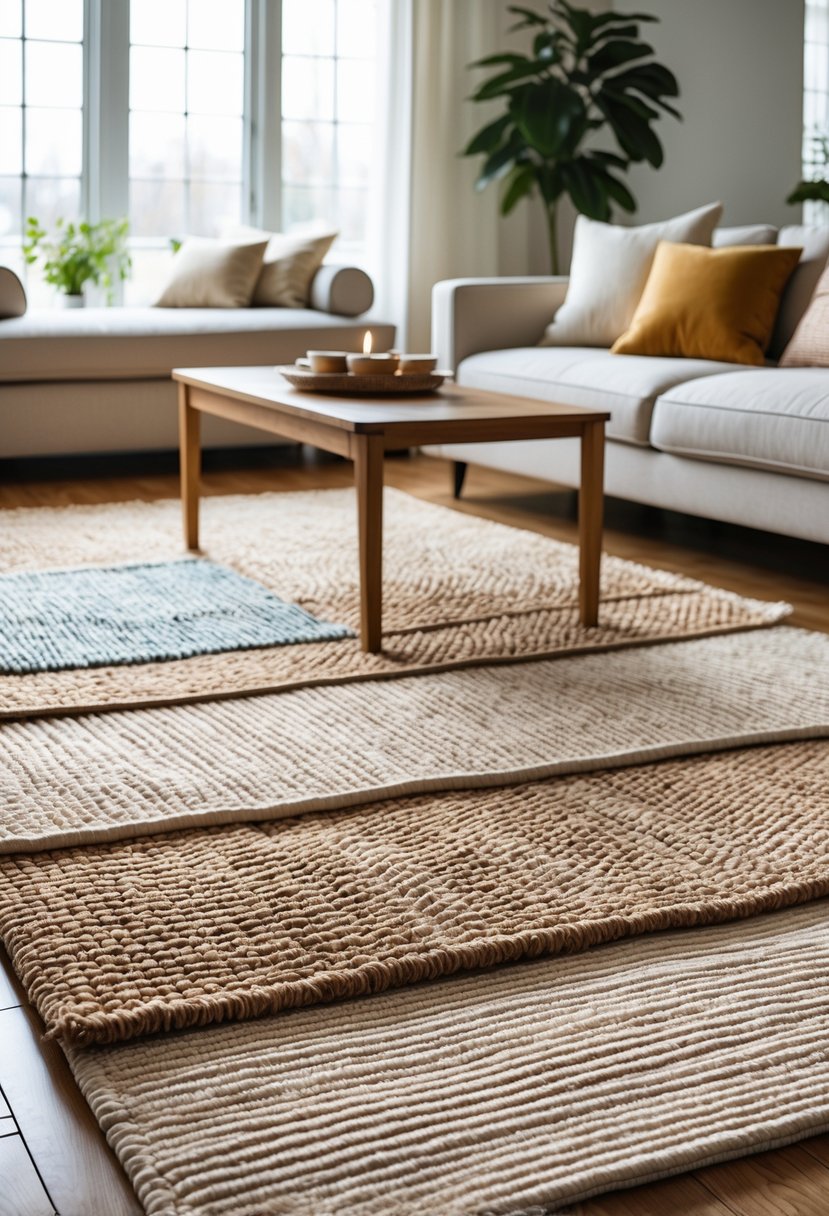
You can create depth in your living room by layering rugs with different textures. Try placing a flat-weave rug over a soft, plush one. This adds a tactile feel that invites comfort.
Mixing patterns and materials also makes your space look more interesting. Layered rugs help define areas in an open room. This simple change adds warmth and style without clutter.
2) Use a cognac leather sectional to anchor the space
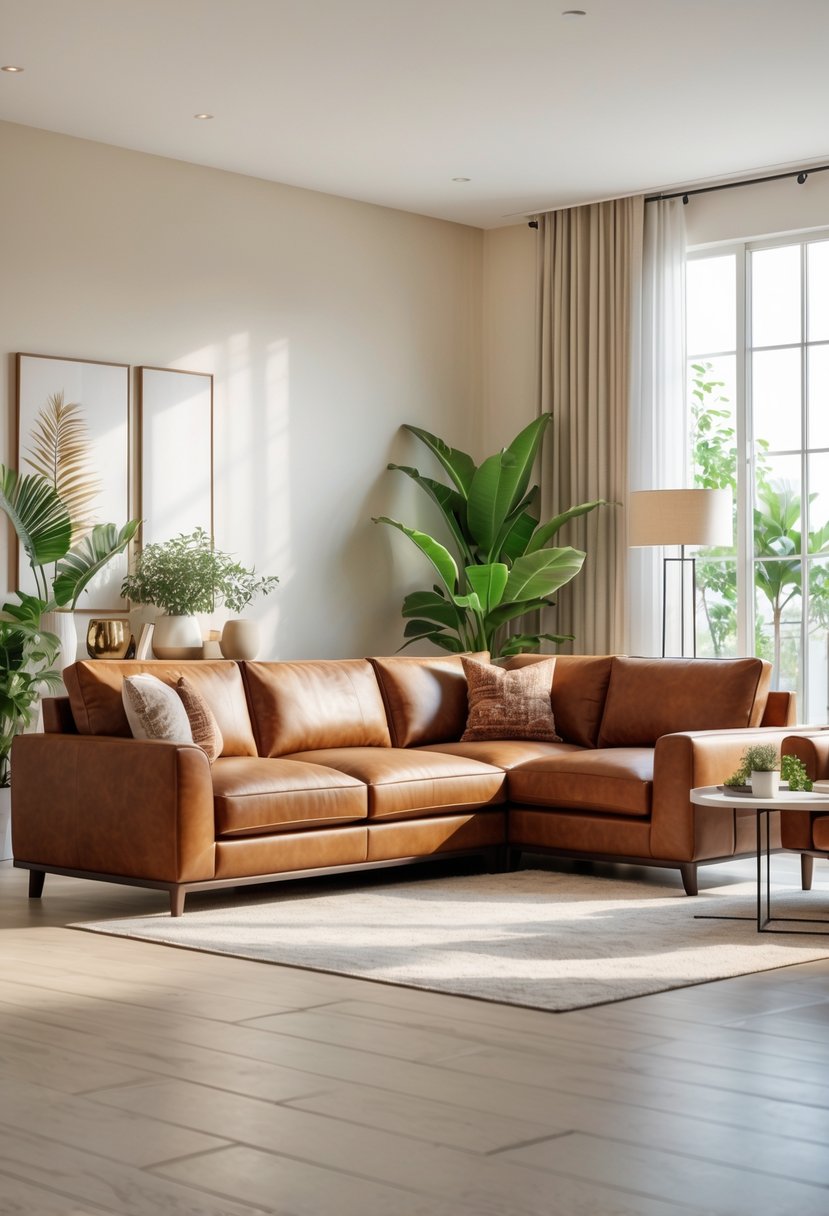
A cognac leather sectional can be the main piece in your living room. Its warm, rich color adds a cozy and stylish feel.
You can pair it with neutral tones like beige or grey for balance. Adding textured pillows or throws helps create depth.
This type of couch works well in many styles, from modern to industrial. It gives you a strong base to build your room around.
3) Incorporate woven window shades for natural texture
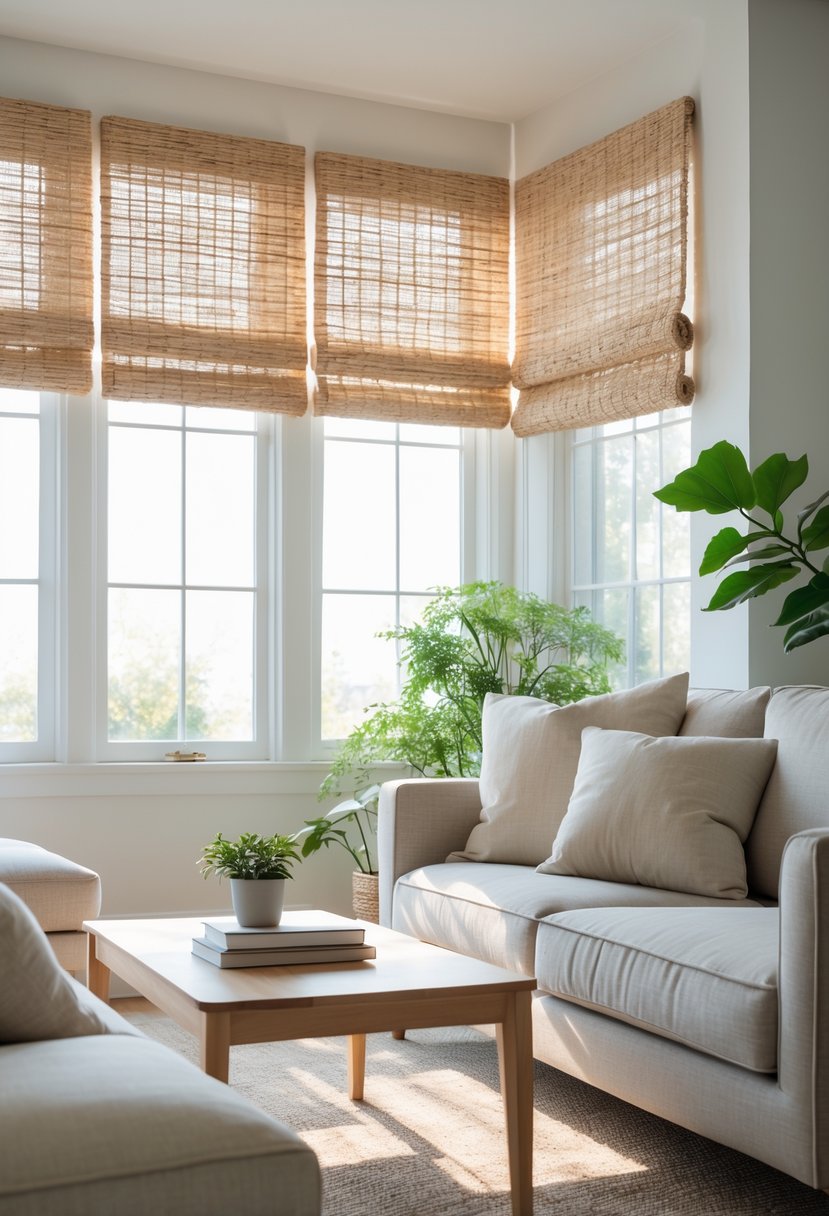
You can add warmth and texture to your living room by choosing woven window shades. These shades are made from natural fibers like bamboo, grass, or rattan.
Woven shades let in soft light while providing privacy. They come in different weaves, so you can pick how much light you want.
The natural patterns and textures of these shades create a calm, organic feel. They work well with many decor styles, especially rustic or earthy rooms.
4) Mix wicker baskets with rattan chairs for eclectic seating
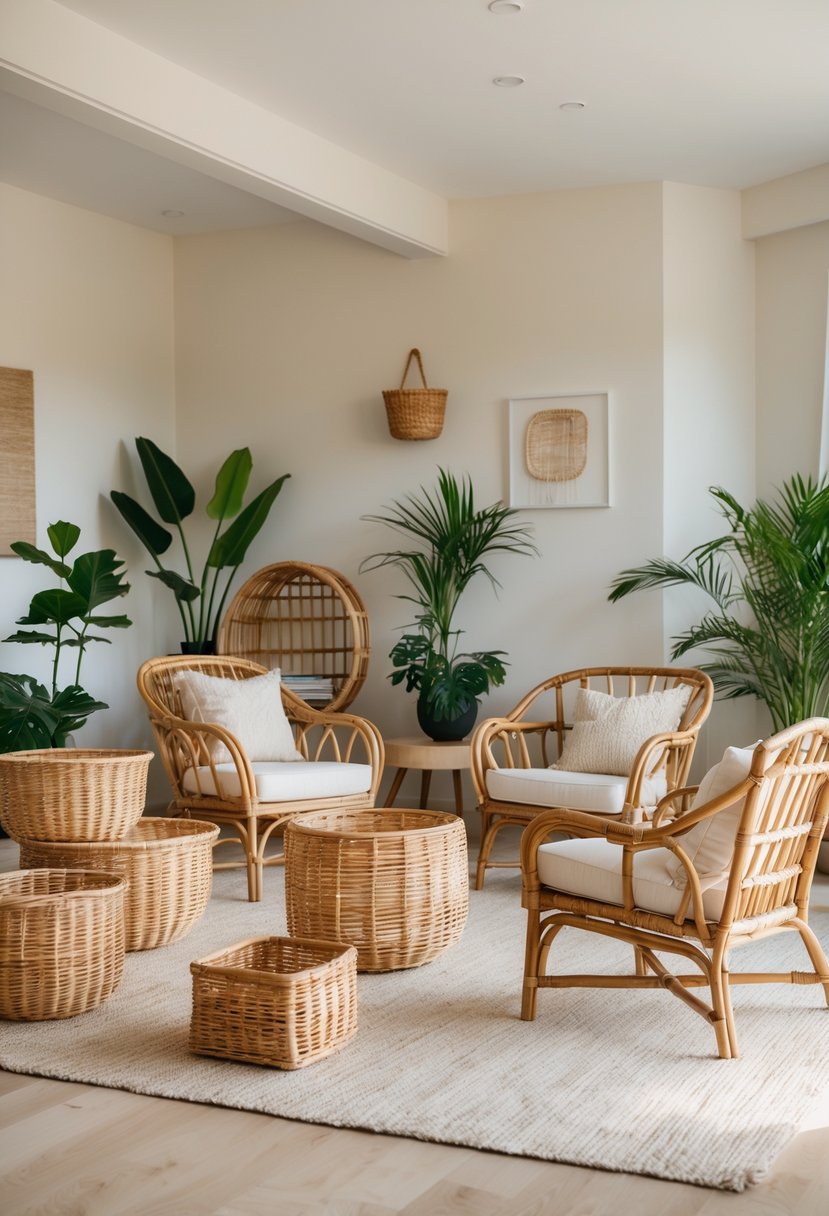
You can create a unique seating area by pairing rattan chairs with wicker baskets. Use the baskets for storage or as side tables next to your chairs. This mix adds texture and function to your living room.
Choose baskets in different shapes and sizes to keep the look interesting. The natural materials work well together and bring a relaxed, cozy feel to your space.
5) Add mirrors to expand light and create openness
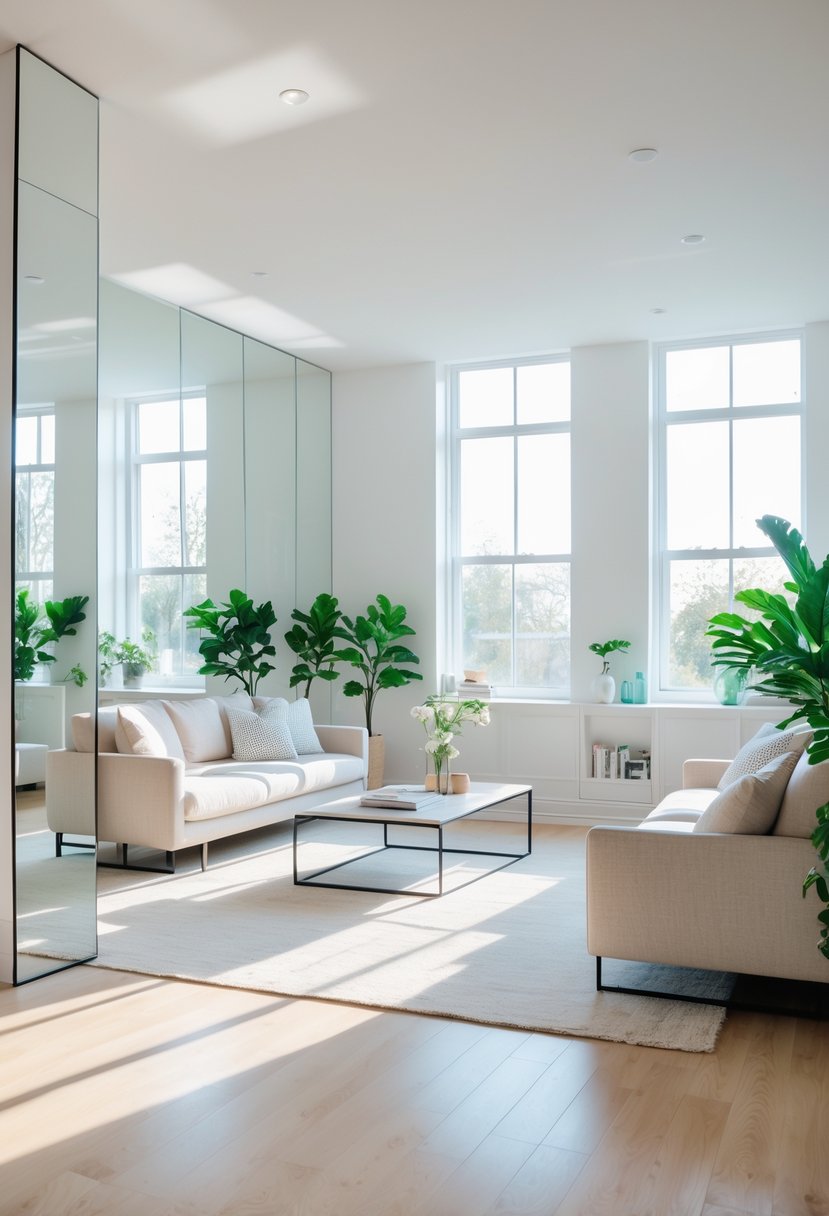
Adding mirrors to your living room helps reflect natural and artificial light. This makes the space feel brighter and more open.
Place mirrors near light sources like windows or lamps to spread light throughout the room.
You can hang a large mirror above the sofa or choose one with a unique frame to add style and depth. Mirrors create a simple way to make your living area feel less crowded without changing the layout.
6) Choose a statement coffee table as a focal point
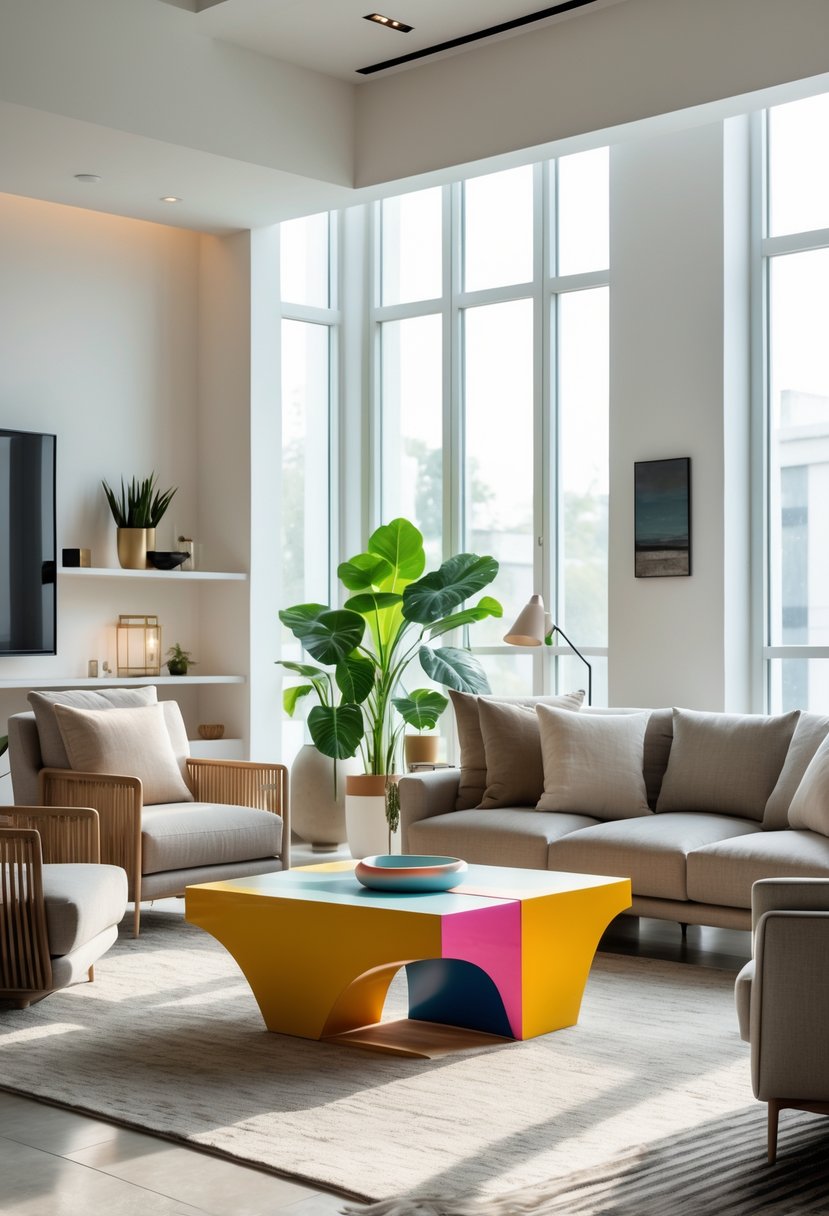
You can make your living room more inviting by choosing a coffee table that stands out. A unique table, like one with natural wood edges or an interesting shape, draws attention.
Pick a table that matches your style and adds character to the space. It should work well with your other furniture while being eye-catching. This simple choice helps anchor your room’s design without much extra effort.
7) Select a comfortable, durable sofa for everyday use
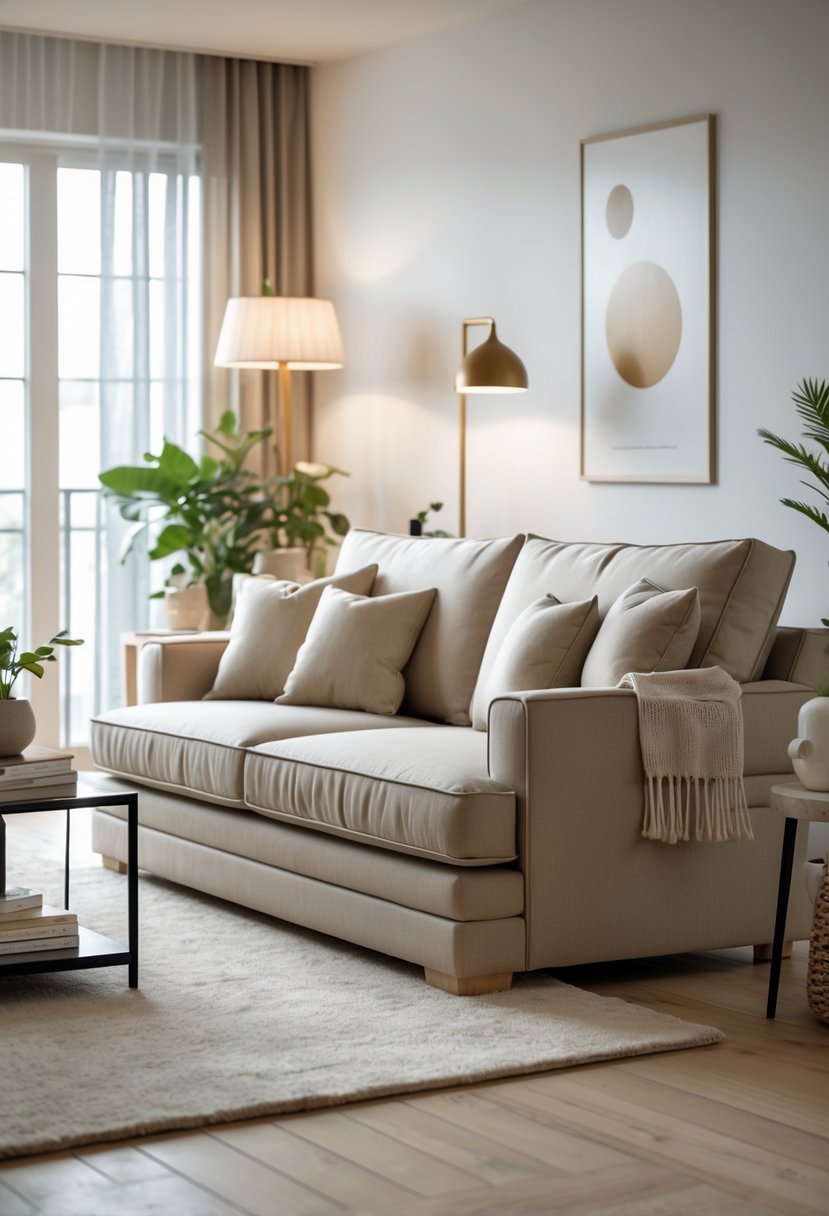
Choose a sofa that feels comfortable for you and your family. It should support daily use without wearing out quickly.
Look for materials that are easy to clean and last over time. Durable fabrics or leather can handle spills and heavy use.
Pick a design that fits your room size and matches your style. Your sofa is often the main piece in your living room, so make it both practical and attractive.
8) Use bold patterns sparingly for visual interest
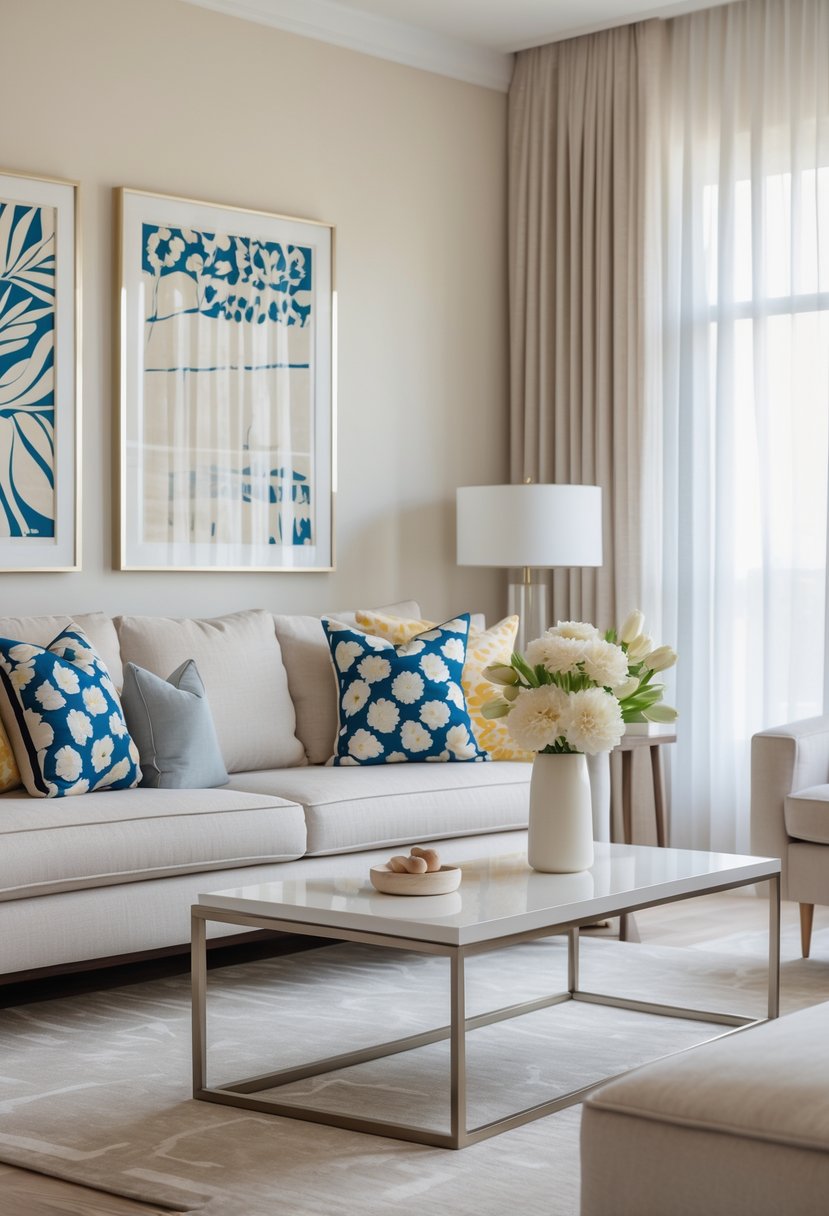
You can add bold patterns to your living room without making it feel too busy. Use them on a few key pieces like pillows or an accent wall.
This creates points that catch the eye and make the room more interesting.
Pair bold patterns with subtle colors to keep your space balanced and calm. This way, the patterns stand out without overwhelming the room.
9) Incorporate natural wood furniture for warmth
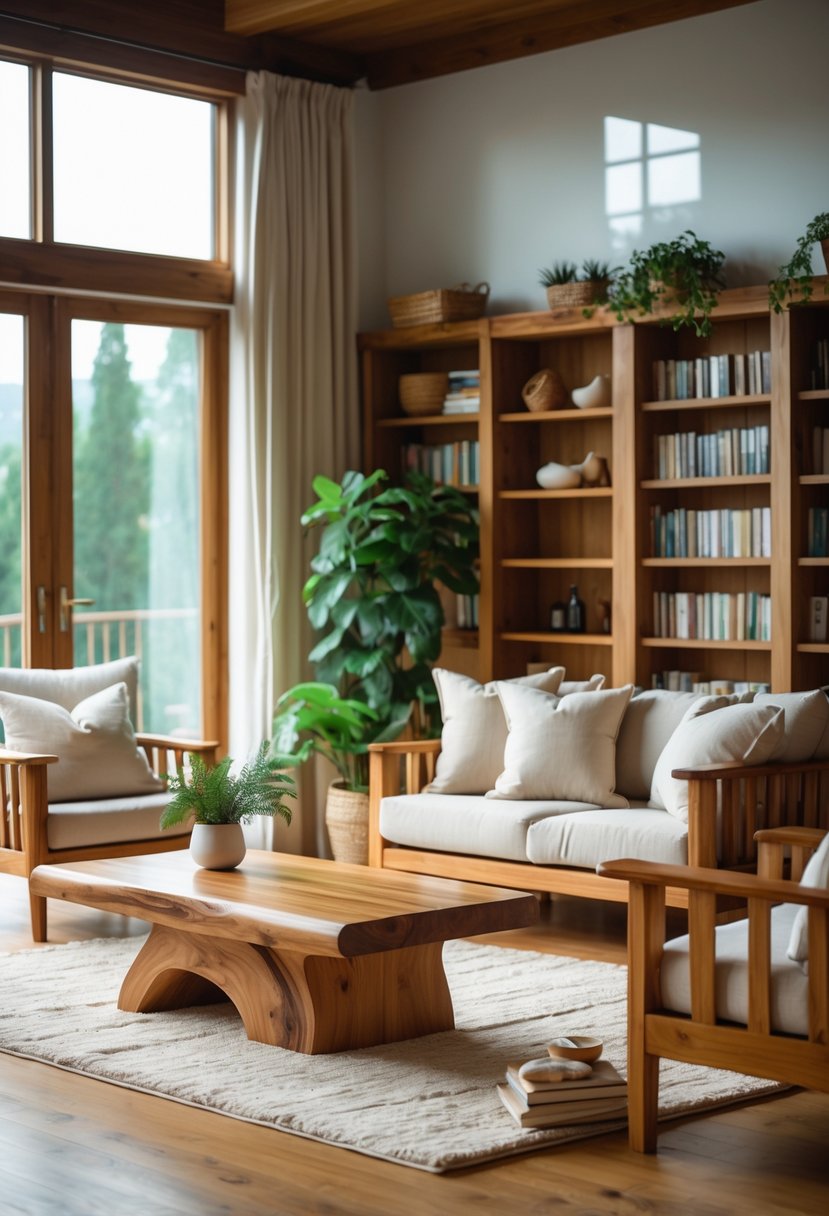
Adding natural wood furniture brings warmth to your living room. Pieces like a wood coffee table or shelves create a cozy and inviting feel.
Wood’s texture and grain add a natural charm that pairs well with neutral colors. It also helps balance soft fabrics and modern designs.
Using wood furniture can make your space feel grounded and comfortable without being too heavy or old-fashioned. Choose simple designs to keep the look fresh.
10) Add indoor plants for freshness and color
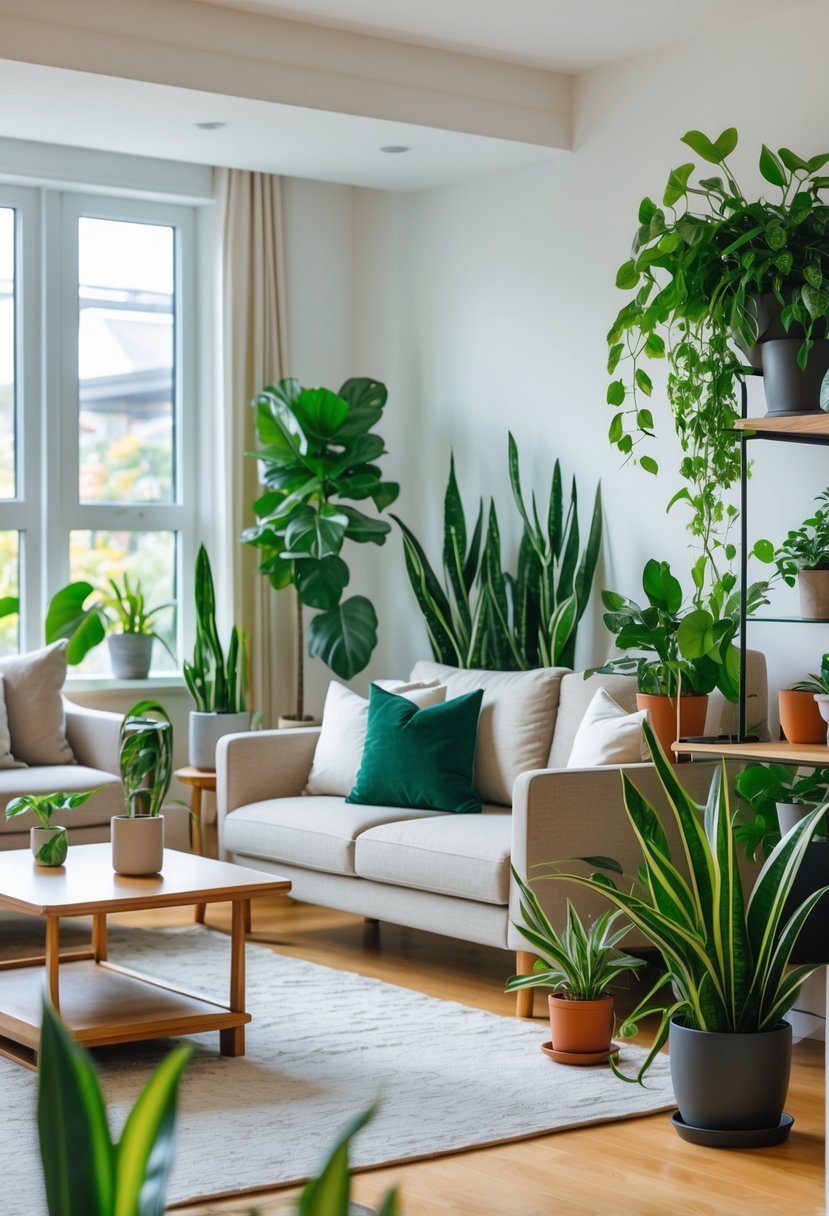
You can brighten your living room by adding indoor plants. They bring natural color and make the space feel fresher.
Choose plants that match your room’s light and care needs. Low-maintenance options like pothos, snake plants, or ZZ plants work well.
Mix different pot styles and sizes to create visual interest. Hanging plants or those integrated into furniture can add unique touches to your decor.
11) Use layered lighting: floor, table, and overhead
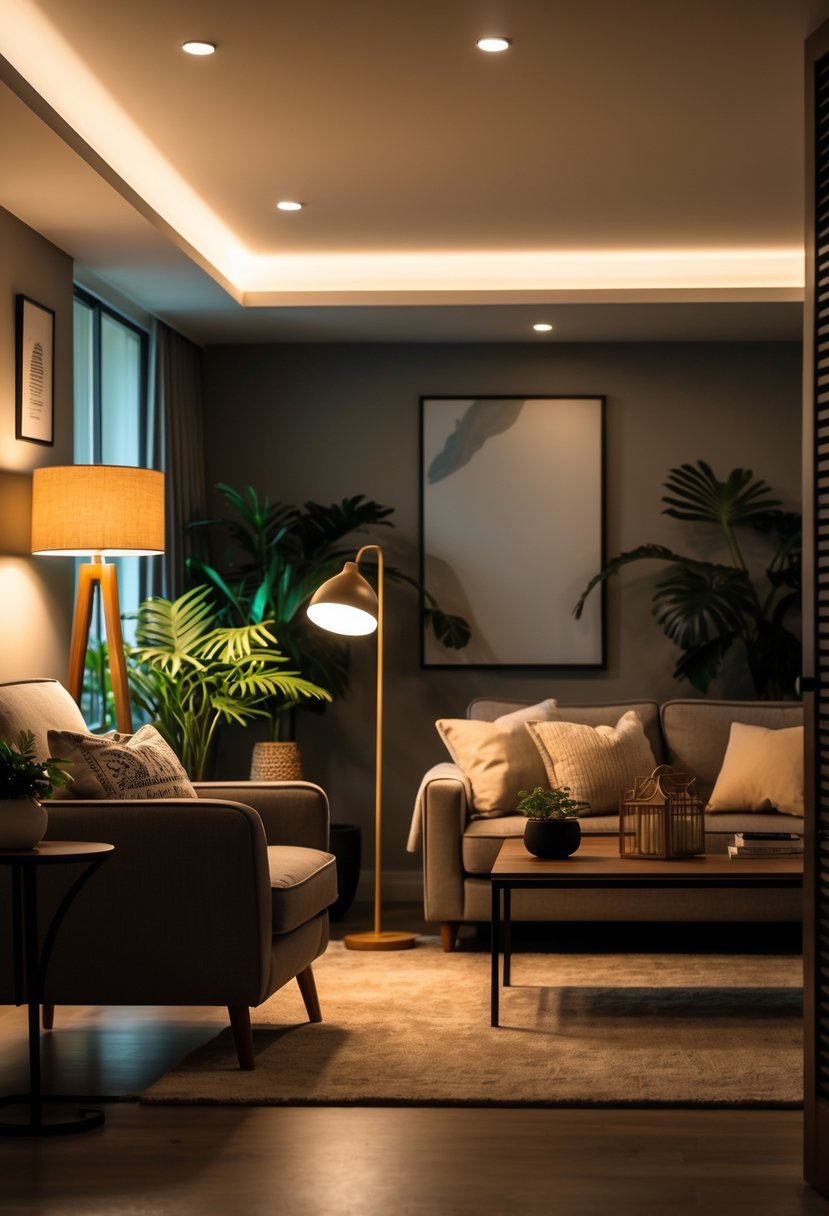
You should avoid relying on just one overhead light. It can make the room look flat and uninviting.
Add floor lamps near seating areas to create cozy spots for reading or relaxing. Table lamps on side tables add extra warmth and comfort.
Combine these with overhead lights to provide balanced illumination. This mix helps make your living room feel welcoming and well-designed.
12) Incorporate abstract artwork for modern appeal
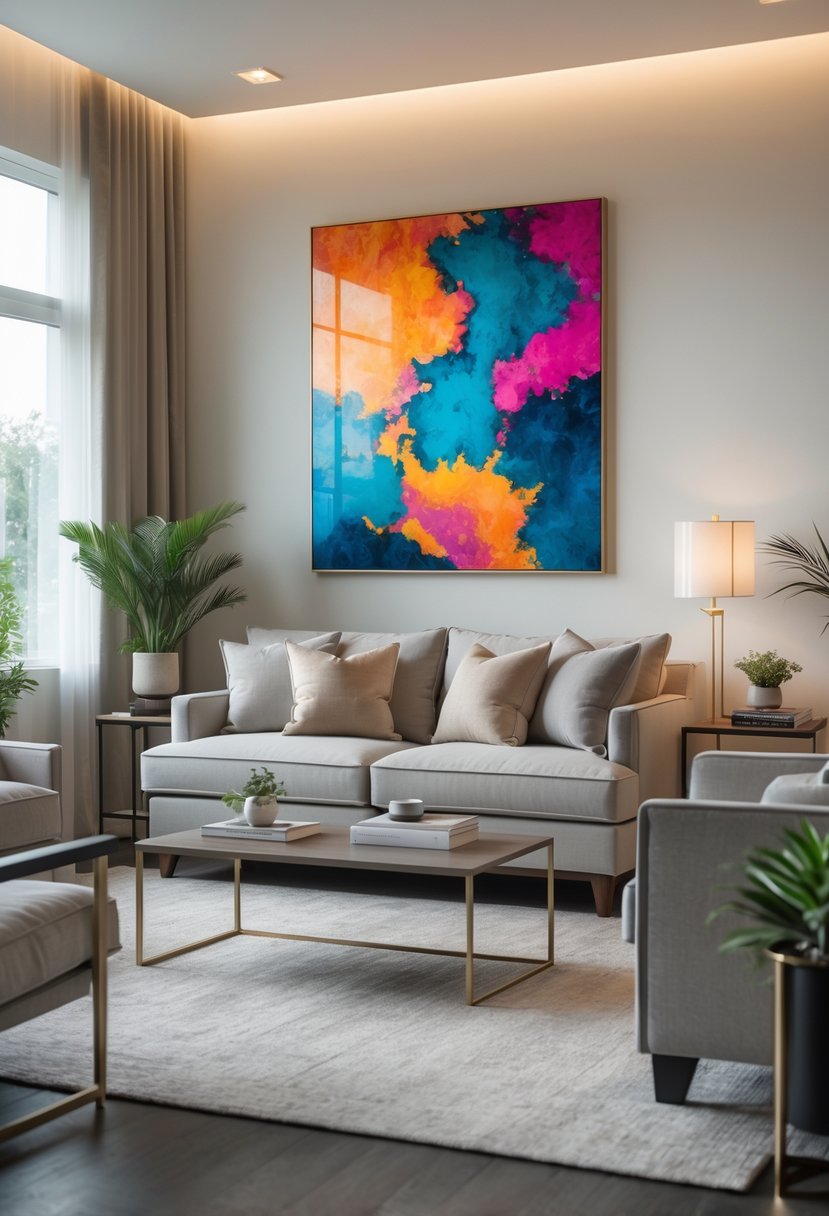
You can use abstract art to give your living room a modern look. Choose pieces with colors that match or contrast well with your furniture.
Abstract art adds interest without being too busy. It also lets you express your style in a simple way.
A bold abstract piece can become the room’s centerpiece. Or, pick softer designs to add subtle movement and flow.
Principles of Living Room Design
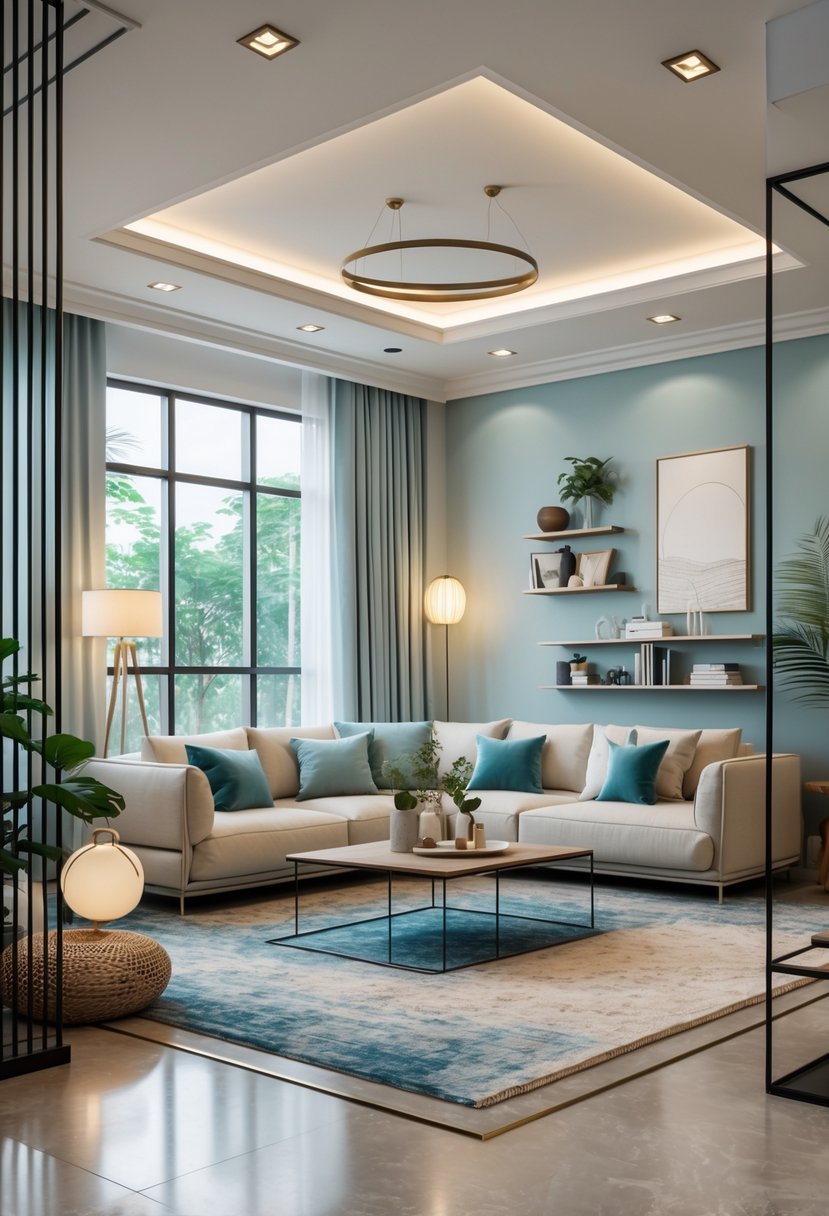
To create a well-designed living room, you need to think about how the space works and how it looks. This means balancing the way you use the room with how it feels and looks to visitors.
Balancing Function and Aesthetics
Your living room should be both useful and visually pleasing. Start by considering how many people use the room each day and what activities take place there. For example, do you watch TV, read, or entertain guests?
Choose furniture that fits the size of the room without crowding it. This helps keep traffic flowing smoothly and avoids clutter. Comfortable seating is important, but the style should also match your overall design.
Storage solutions like shelves or cabinets can keep the room tidy while adding style. Finally, think about lighting. Use a mix of natural light, overhead fixtures, and lamps to create a welcoming environment.
Understanding Color Psychology
Colors influence how you feel in a room. Warm colors like red, orange, or yellow can make a space feel cozy and energetic. Cooler colors like blue and green create a calm and relaxing atmosphere.
When choosing colors, consider the mood you want for your living room. Neutral tones like beige, gray, or white are good bases that pair well with bolder accent colors.
Use color in walls, furniture, or decor to guide attention and create balance. You can also use patterns or textures to add depth. Remember, brighter colors work well in small amounts, while softer tones can cover larger surfaces to avoid overwhelming the space.
Creating Cohesive Ambiance
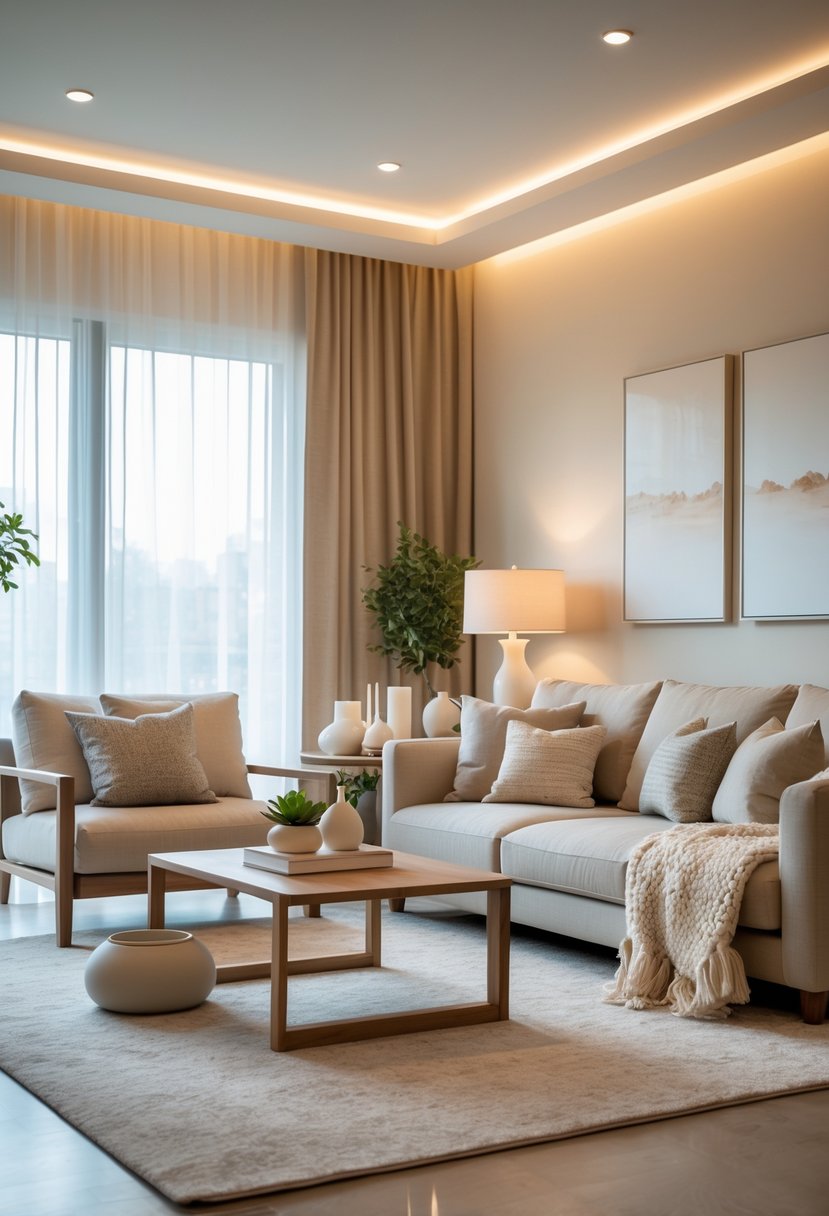
To create a balanced and welcoming feel in your living room, focus on how materials, textures, and lighting work together. Every element should complement your furniture and color choices to enhance comfort and style.
Integrating Textures and Materials
Using a mix of textures adds depth and interest to your space. Combine soft textiles like wool or velvet cushions with harder surfaces such as wood or metal furniture. For example, a geometric wool rug can bring a modern touch while feeling warm underfoot.
Pay attention to color harmony. Choose materials that match or complement your existing palette. Adding throws, pillows, and curtains with varied textures softens the room and invites relaxation. Avoid using too many similar textures, as this can make the space feel flat.
Optimizing Lighting for Comfort
Lighting impacts both mood and functionality in your living room. Use warm-toned bulbs to create a soft, inviting glow throughout the space. Combine multiple light sources, such as table lamps, floor lamps, and overhead fixtures, to control brightness levels.
Consider dimmable lights or lamps with adjustable shades. These allow you to easily change the atmosphere based on the time of day or activity. Avoid harsh, direct lighting to keep your room feeling calm and cozy. Ambient and task lighting together provide both style and comfort.
Frequently Asked Questions
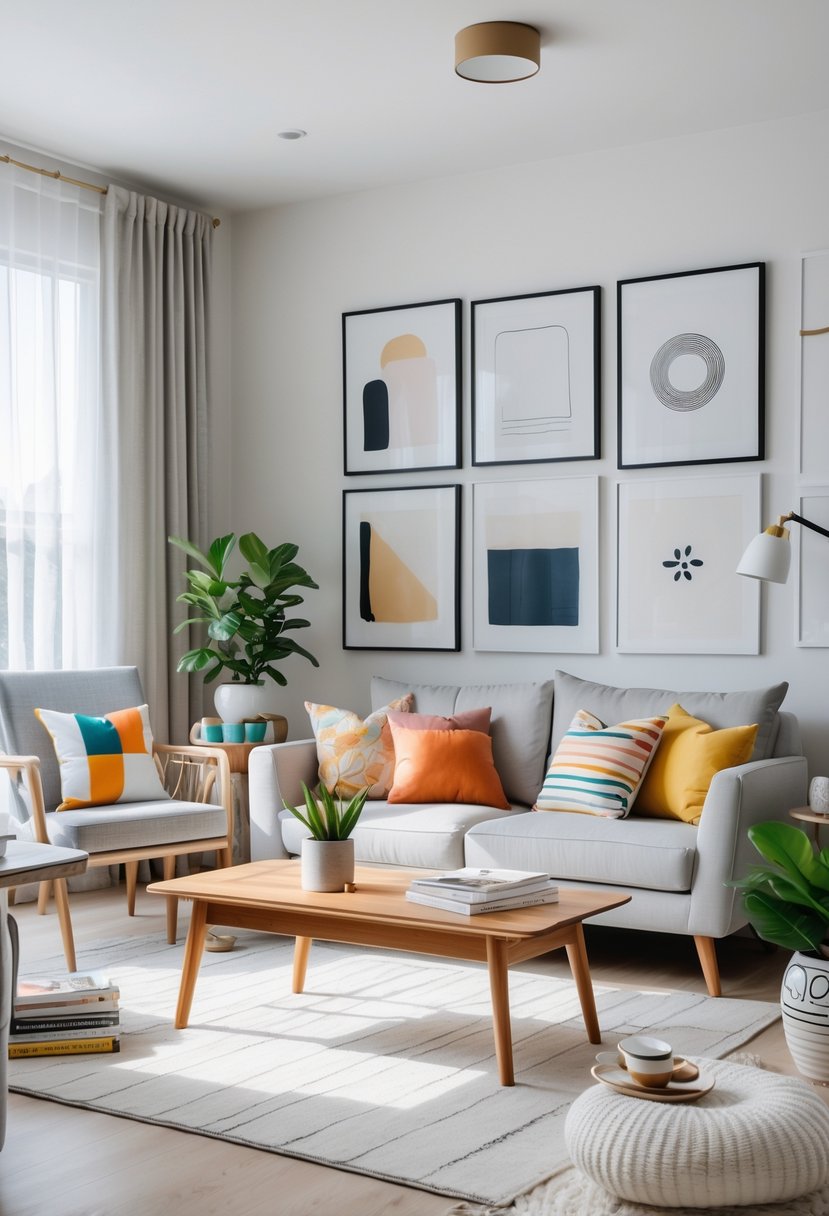
You will find specific ways to bring style and function to your living room without overspending. These tips cover current trends, smart space use, and easy design rules to guide your choices.
What are the emerging trends in living room decor for 2025?
In 2025, natural materials like wicker, rattan, and woven window shades are popular. Sustainable and eco-friendly pieces paired with vintage or artisanal finds add uniqueness.
Layering textured rugs adds warmth and depth to your space. Using cognac leather sectionals creates a strong anchor for the room.
How can one decorate a small living room to maximize space?
Use light colors and mirrors to open up the room visually. Mirrors reflect light and make the area feel larger.
Choose furniture that fits the scale of your room, like slim armchairs or compact sofas. Use multifunctional pieces, such as ottomans with storage, to reduce clutter.
What are some budget-friendly living room decorating strategies?
Mix affordable wicker baskets with more costly items like rattan chairs for a balanced look. Focus on layering textures to make your room feel stylish without high costs.
Shop second-hand or vintage for unique pieces. Simple additions, like a textured rug or woven window shades, can freshen the space affordably.
Can you explain the 3-5-7 rule in decorating and how it applies to living rooms?
The 3-5-7 rule means using 3 large, 5 medium, and 7 small items in your room. This creates visual balance and avoids clutter.
You might use three big furniture pieces, five pillows or lamps, and seven decorative accents like books or candles. This keeps your design organized and appealing.
What wall decor ideas can make a living room more vibrant and inviting?
Add mirrors to brighten the room and create a sense of openness. Framed art or a statement mirror above a fireplace works well as a focal point.
Use shelves for plants or small objects that add color and life. Combining different wall textures or materials can also add interest.
How can I achieve a modern look in my living room with simple changes?
Start by removing unnecessary items to create clean lines and open space. Replace heavy curtains with woven window shades for a natural, modern feel.
Use a cognac leather sectional to add a contemporary touch. Add woven baskets and rattan chairs for texture while keeping the look fresh and uncluttered.






